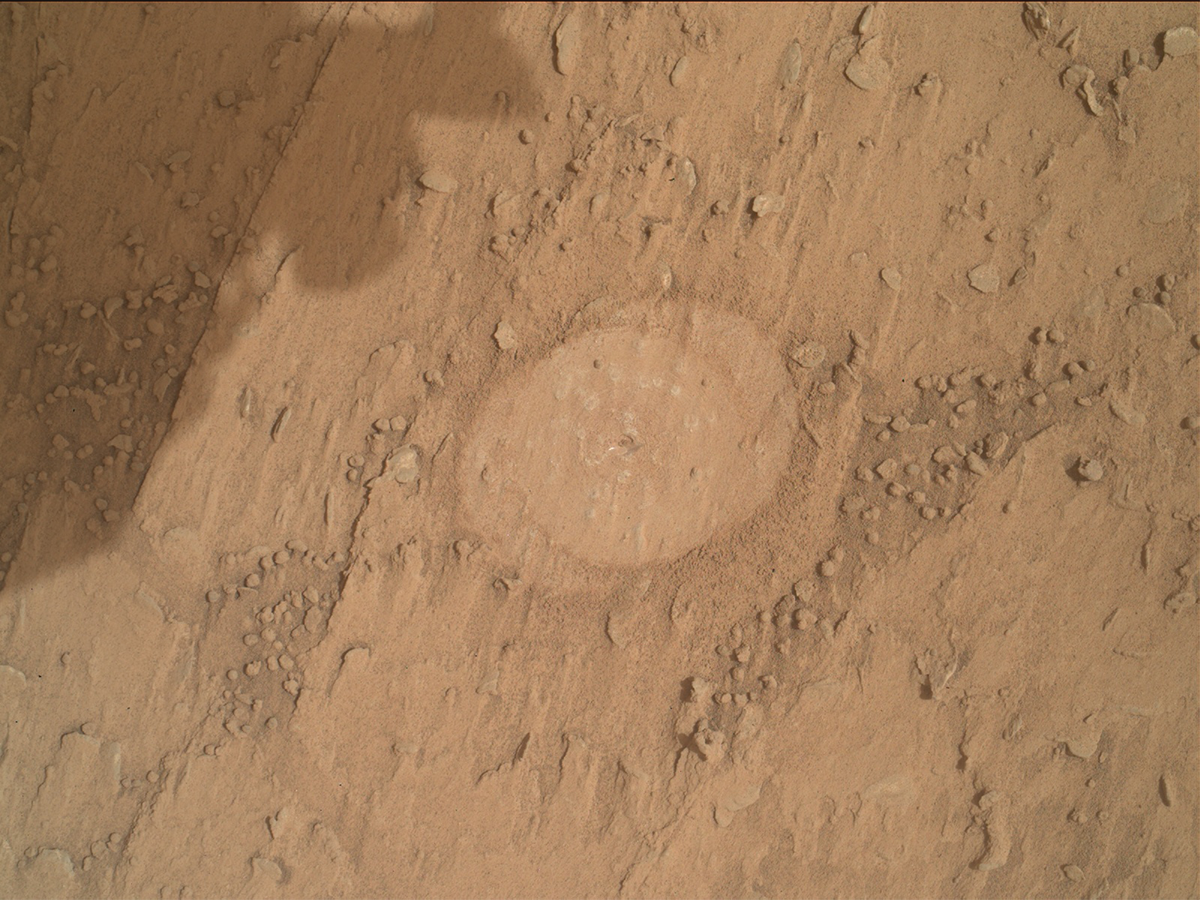3 min read

Today was an exciting day of planning (and not just because of the thunderstorms here in southern California!). We planned a full drill of Avanavero, our first drill in over 6 months! The MAHLI image shows the spot after the DRT brush and our drill preload test. In November 2021 we faced an anomaly with the brake mechanisms in the arm and out of an abundance of caution, the team decided to pause any future drill-based sampling campaigns until the engineers got a more thorough look at the problem and what we can do to mitigate wear on the backup set of brakes we are now using. Dozens of engineers have been tackling the problem and finally gave the ok to drill again with some adjustments to our drill campaign process. The teamwork in tackling hard problems is one of my favorite things about working on the Curiosity team!
The first sol of the plan was mostly dedicated to the drilling. In the science block before the drill, we take some Mastcam documentation of Avanavero and of “Marbura Hill” along with some photometry observations with Mastcam and Navcam. These observations will show us how the surface reflects light under different illumination conditions. Then we’ll drill! We will also take REMS and DAN background measurements as well.
Sol 3513 starts out with a science block that includes more photometry imaging with Mastcam and Navcam. We also take Mastcam and ChemCam observations of the Avanavero drill tailings. We also take a ChemCam observation of “Yanomami” before some atmospheric Navcam imaging. Later in the afternoon we have another science block of photometry observations. Later in the sol we also perform the drill sample portion characterization activity, where we deliver two portions of the drilled sample to the SAM inlet cover to take a look at the samples before we deliver any into the CheMin or SAM instruments. We also have DAN and REMS measurements as well.
Today my role was “RP2” so I was responsible for the final verification and modeling of the drill commanding. Because of how many sequences it takes to drill, our modeling software can take hours! Today’s planning also started at noon Pacific, so the team stayed at work late to make sure we were confident in the plan. I know I won’t be the only one on the team eagerly awaiting the downlink of telemetry about how the drilling went!
Written by Keri Bean, Rover Planner Deputy Team Lead at NASA's Jet Propulsion Laboratory







